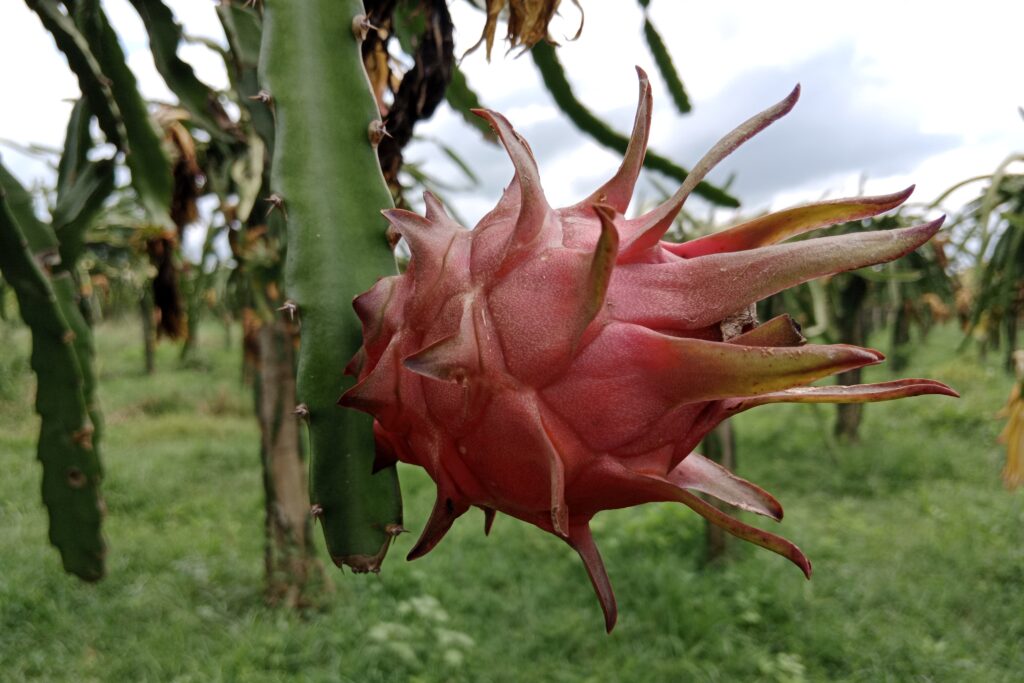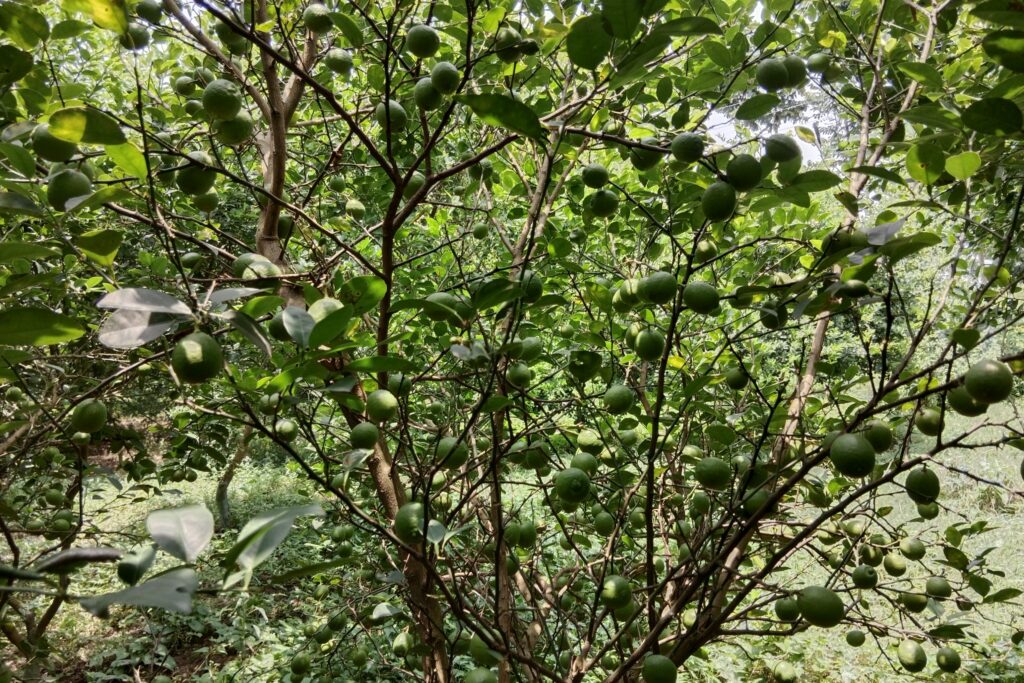Barley Farming
Barley (Hordeum vulgare L.) is one of the world’s oldest and most important cereal crops, primarily grown for animal feed, malt production for beer and whiskey, and human consumption. It is a highly adaptable crop known for its shorter growing season and greater tolerance to drought and saline soils compared to other cereals like wheat.
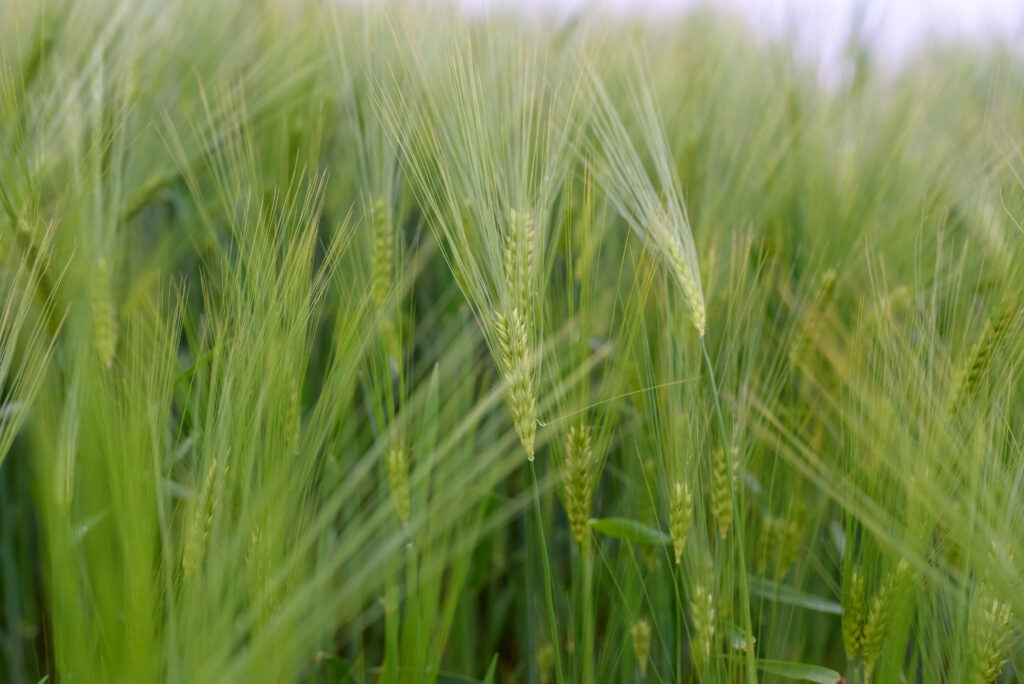
For farmers and agri-entrepreneurs seeking a viable and lucrative venture, understanding the potential barley farming profit per acre is a fundamental starting point. A detailed financial breakdown reveals a compelling narrative: from a single acre of cultivation, an initial investment of approximately NRs. 52,000 can yield a substantial gross return of NRs. 115,000.
This results in a remarkable net profit of NRs. 63,000, effectively meaning that for every rupee invested, the farmer can expect to get back more than double.
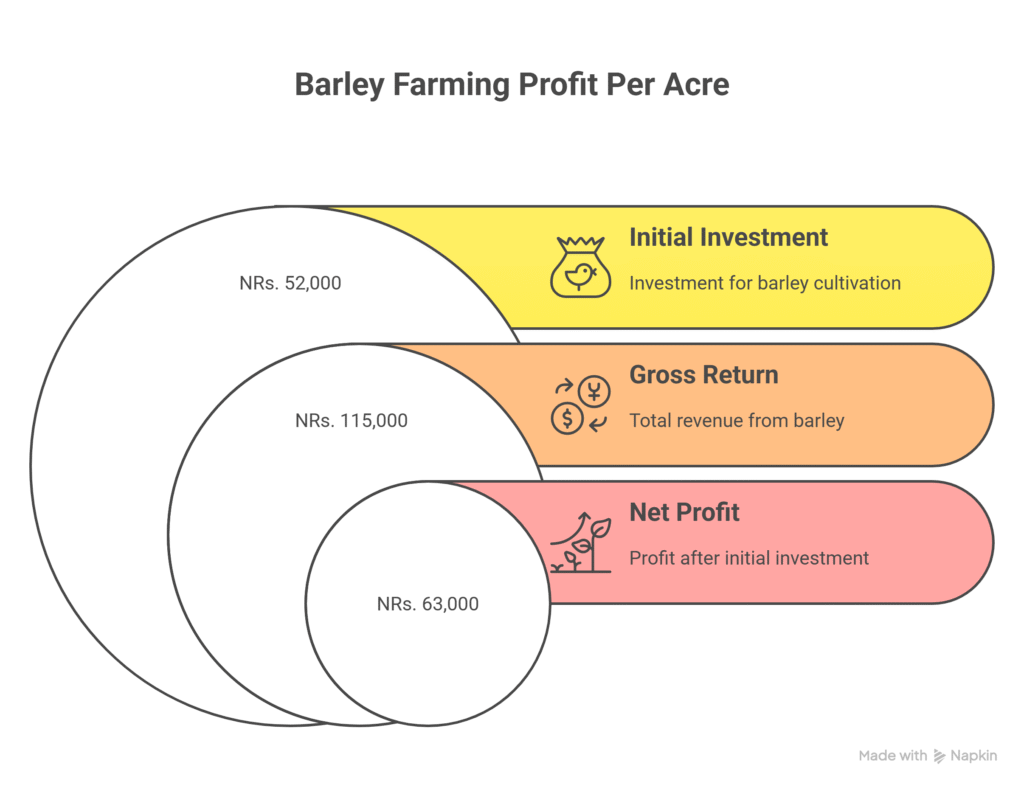
This high profitability is significantly bolstered by the crop’s dual-income nature, where the barley straw—a valuable source of quality livestock fodder—contributes significantly to the total revenue, thereby making barley cultivation not only a profitable enterprise but also a sustainable and efficient one.
Land Preparation
Land preparation aims to create a fine, firm, and weed-free seedbed that ensures good seed-to-soil contact and uniform germination. It begins with deep plowing (20–25 cm) using a moldboard plow immediately after the previous crop’s harvest to incorporate residues and expose pests and weeds to sunlight.
After the first rains or irrigation, 2–3 cross harrowings with a disc harrow are performed to break large clods and level the field. Finally, planking or levelling compacts the soil slightly, conserves moisture, and provides a uniform surface for seed drilling, with the field kept weed-free and adequately moist at sowing time.
Soil Type
Barley grows best in well-drained loamy to sandy loam soils, with an ideal pH range of 6.0 to 8.0. It is more tolerant of alkaline and saline conditions than wheat but less tolerant of acidic soils. However, heavy clay soils with poor drainage are unsuitable, as they often cause waterlogging and root diseases.
Climatic Requirements
Barley is primarily grown as a rabi (winter) crop, sown in October–November and harvested in March–April. It requires cool temperatures for germination and early growth, with an optimal range of 12°C to 25°C.
While it tolerates frost better than wheat at the vegetative stage, it is sensitive during flowering and grain filling. The crop requires approximately 500–750 mm of water throughout its growing cycle, is more drought-tolerant than wheat, and is well-suited to low-rainfall areas; however, excessive rain or humidity at maturity can increase disease risk.
Major Cultivars
Cultivar selection depends on regional adaptability, intended use (feed, malt, or food), disease resistance, and yield potential, and they are generally classified by row type.
| Type of Cultivar | Key Characteristics | Primary Use & Examples |
| Two-Row Barley | Has two rows of grain on the head. Features a uniform kernel size and lower protein content. | Primary Use: Malting (for beer and whiskey). Examples: Pinnacle, Metcalfe. |
| Six-Row Barley | Has six rows of grain. Typically higher yielding and higher in protein content. | Primary Use: Animal feed. Examples: Lacey, Quest. |
| Hulless Barley | The hull (outer shell) is loosely attached and is removed during threshing. | Primary Use: Human food. Examples: Dawn. |
| Common Indian Varieties | Bred for regional adaptability, disease resistance, and yield potential in specific Indian climates. | For Plains: RD-2668, DWRB-101, DWRB-123. For Hilly Regions: Himani, BHS-352. |
Propagation
Barley is propagated sexually through seeds and is predominantly a self-pollinating crop, which ensures genetic purity and stability across generations. Farmers can use seeds saved from a previous harvest for planting, provided they are of a pure variety, healthy, and free from diseases, thereby reducing input costs and ensuring consistent crop performance. Certified seeds are often recommended for better germination, higher yields, and resistance to pests and diseases, but in traditional practices, carefully selected farm-saved seeds are also widely used for propagation.
Seed Rate per Acre
The seed rate for barley varies depending on seed size, germination percentage, and the method of sowing. For timely sown crops, the recommended rate is 35–40 kg per acre, while in late sowing conditions, it is advisable to increase the rate to 40–45 kg per acre to compensate for reduced tillering.
Planting
a) Planting Season
The optimal time for sowing is mid-October to mid-November in most subtropical regions. Early sowing can lead to excessive vegetative growth and insect problems, while late sowing reduces yield due to shorter growth periods and higher temperatures during grain filling.
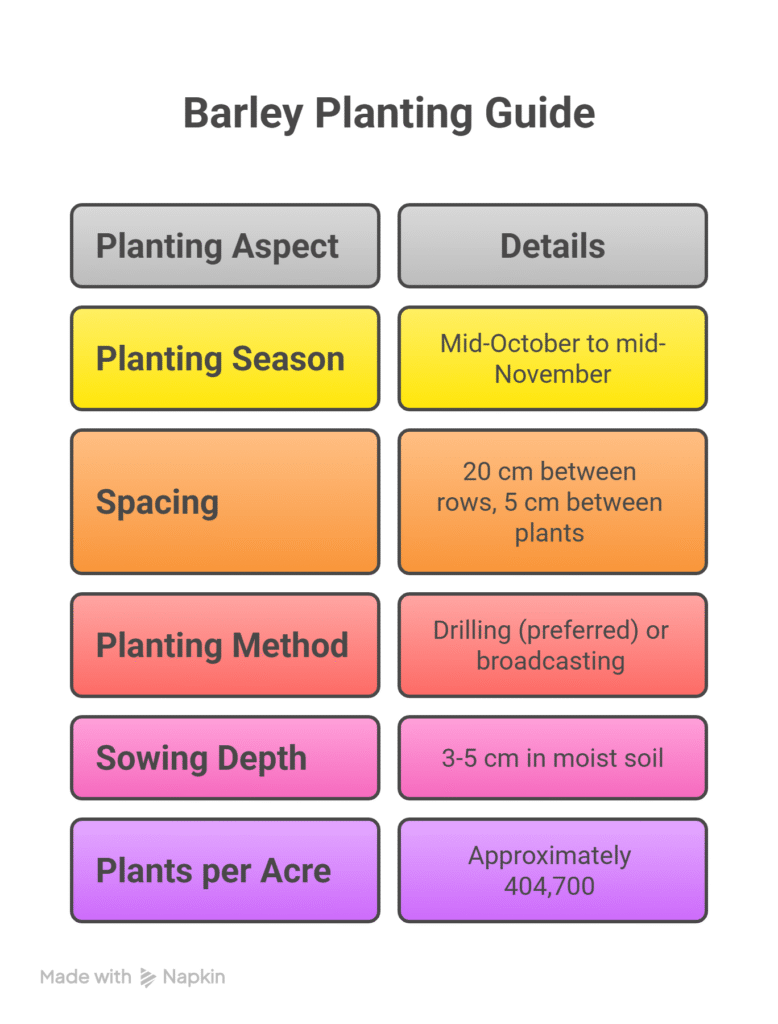
b) Spacing
For barley cultivation, the recommended spacing is 20 cm between rows and 5 cm between plants within the row.
c) Planting Method
Barley seeds can be sown either by broadcasting or, more efficiently, with a seed drill. Drilling is the preferred method as it ensures uniform depth and spacing, promotes better germination, and can increase yields by 15–20% compared to broadcasting.
d) Sowing Depth
- cm deep in moist soil.
e) Number of Plants per Acre
With a seed rate of 40 kg per acre and a target density of about 100 plants per square meter, an acre of land can accommodate approximately 404,700 barley plants.
Intercropping
Intercropping in barley cultivation is relatively rare in large-scale farming due to the reliance on machinery for sowing and harvesting, which makes mixed cropping less practical. However, in traditional or smallholder farming systems, intercropping is sometimes employed to maximize land use and improve soil health.
Common intercrops include legumes such as chickpea or lentil, which contribute to soil fertility by fixing atmospheric nitrogen, thereby reducing the need for chemical fertilizers. In some regions, mustard is also grown alongside barley, providing additional income and diversifying farm production.
Typically, intercropped barley and companion plants are sown in paired rows, such as 2:2 or 3:3 arrangements, to ensure sufficient spacing for growth, light penetration, and ease of management, making this approach both ecologically beneficial and resource-efficient for small-scale farmers.
Irrigation
| Aspect | Details |
| Water Requirement | Requires less water than wheat. |
| Critical Stages | Crown Root Initiation (20-25 Days After Sowing), Tillering, Booting, and Flowering. |
| Schedule | Generally, 2-4 irrigations are sufficient, depending on rainfall. |
| · 1st Irrigation | 3-4 weeks after sowing (at the Crown Root Initiation stage). |
| · 2nd Irrigation | At the time of tillering. |
| · 3rd Irrigation | At the flowering stage. |
| Key Consideration | Avoid irrigation once the crop has reached the dough stage, as it can delay maturity and increase the risk of lodging and diseases. |
Fertilizer and Manure
Soil testing is the best way to determine precise nutrient requirements. The general recommendation is given below
- Organic Manure: Apply 8-10 tonnes of well-decomposed Farm Yard Manure (FYM) or compost per acre during land preparation.
- Biofertilizers: Apply Azospirillum + PSB + Potash mobilizing Bacteria each at 800g per acre.
- Inorganic Fertilizer (Per Acre):
- Nitrogen (N): 30-35 kg (e.g., ~70 kg of Urea). Half should be applied as a basal dose at sowing and the rest at the first irrigation.
- Phosphorus (P₂O₅): 20-25 kg (e.g., ~125 kg of Single Super Phosphate).
- Potash (K₂O): 12-15 kg if soils are deficient.
All phosphorus and potash should be applied at the time of sowing.
Weed Control
Weeds pose a serious challenge in barley cultivation as they compete with the crop for essential resources such as nutrients, water, and sunlight. If not managed properly, they can significantly reduce yield and crop quality. Therefore, adopting effective weed control practices is vital for ensuring healthy barley growth.
Cultural Methods
One of the simplest and most sustainable approaches is cultural weed control. This includes preparing a clean seedbed before sowing and using certified, weed-free seed. These practices help minimize the introduction and spread of weed species right from the beginning of the cropping cycle.
Mechanical Methods
Mechanical weed management is another effective approach. Hand weeding or hoeing carried out about 30–35 days after sowing can greatly reduce weed pressure. This method is particularly useful for smallholder farmers and ensures that weeds are removed before they can cause major competition with the crop.
Chemical Methods
Herbicides provide an additional tool for weed management when cultural and mechanical methods alone are not sufficient. Pre-emergence herbicides such as Pendimethalin (1 liter per acre) can be applied immediately after sowing but before the weeds emerge, helping to prevent their establishment. For post-emergence control, herbicides like 2,4-D (500 ml per acre) or Isoproturon can be applied around 30–35 days after sowing, specifically targeting broadleaf weeds that escape earlier control measures.
Flowering and Fruit Management
Flowering and fruit management in barley is crucial for ensuring good yield and quality. Since barley is a self-pollinating crop, the head or spike emerges from the flag leaf, and flowering (anthesis) takes place, making this a critical stage for proper water and nutrient management.
The fruit of barley is a caryopsis or grain, which does not require any special care beyond maintaining regular irrigation and pest control practices. However, it is essential to avoid stress during the grain filling period, as this stage directly affects both the yield and the quality of the harvest.
Pest and Disease Management
Common Pests
a).Aphid Management
Aphids can cause serious damage by sucking sap from barley plants and transmitting diseases. For preventive control, seeds should be treated with Imidacloprid 70 WS at 5 g per kg of seed or Thiamethoxam 30 FS at 10 ml per kg of seed. If heavy infestation appears in the field, a foliar spray of Imidacloprid 17.8 SL at 100 ml per acre or Thiamethoxam 25 WG at 40 g per acre mixed in 150–200 liters of water can effectively control aphids.
b). Armyworm and Cutworm Management
Armyworms and cutworms feed on leaves and stems, leading to severe crop damage if not managed timely. To control them, a foliar spray of Chlorpyriphos 20 EC at 400–500 ml per acre or Quinalphos 25 EC at 400 ml per acre dissolved in 150–200 liters of water should be applied. Early detection and treatment are essential to prevent heavy yield losses.
c). Termite Management
Termites attack roots and stems, causing drying and patchy crop growth. For effective control, seeds should be treated with Chlorpyriphos 20 EC at 5 ml per kg of seed before sowing. In areas with a known termite problem, apply Phorate 10G granules at 4 kg per acre in the soil at the time of sowing to protect the crop during its early growth stages.
Common Diseases
a). Powdery Mildew Management
Growing resistant varieties is the most effective way to control powdery mildew in barley. For chemical management, a foliar spray of Propiconazole 25 EC at 200 ml per acre mixed in 200 liters of water can be applied. Alternatively, Sulfur-based fungicides such as Wettable Sulfur 80 WP at 600–800 g per acre are also effective in controlling the disease.
b). Rust Management (Stem and Leaf Rusts)
Resistant varieties should be prioritized for managing stem and leaf rusts. If disease symptoms appear, a foliar application of Propiconazole 25 EC at 200 ml per acre or Tebuconazole 25 EC at 200 ml per acre, dissolved in 200 liters of water, helps control the spread and protects crop yield.
c). Loose Smut Management
The primary preventive measure against loose smut is the use of certified, disease-free seed. Seeds should be treated with systemic fungicides such as Carboxin 75 WP at 2 g per kg of seed or Tebuconazole 2 DS at 1 g per kg of seed before sowing to ensure protection against seed-borne infection.
d). Spot Blotch Management
Spot blotch can be managed by treating seeds with Carbendazim 50 WP at 2 g per kg of seed before sowing. In case of field incidence, a foliar spray of Propiconazole 25 EC at 200 ml per acre mixed in 200 liters of water is effective in reducing disease severity and protecting the crop.
Harvesting
Time of Harvesting
Barley should be harvested when the grains become hard and the moisture content falls to around 15–20%. At this stage, the straw turns yellow and becomes brittle. It is always safer to harvest slightly earlier rather than later, as delayed harvesting increases the risk of grain shattering and yield loss.
Manual Harvesting
In small-scale or traditional farming systems, barley is often harvested manually using a sickle. The crop is cut close to the ground, bundled into sheaves, and then transported to the threshing area. Though labor-intensive, this method is still widely practiced where machinery is not available.
Mechanical Harvesting
On large farms, harvesting is generally done with a combine harvester. This machine carries out reaping, threshing, and winnowing in a single operation, saving both time and labor. Mechanical harvesting ensures efficiency, reduces post-harvest losses, and is the preferred method in modern barley cultivation.
Yield
Barley yield largely depends on the cultivar, management practices, and prevailing climatic conditions. Under good management, grain yield typically ranges from 18 to 25 quintals (1,800–2,500 kg) per acre, while straw yield is also substantial, providing about 25 to 35 quintals (2,500–3,500 kg) per acre of high-quality fodder.
Cost of Investment per Acre for Barley Farming
| S.N. | Categories | Cost of Investment (NRs.) |
| 1 | Land Preparation | 15,000 |
| 2 | Seed | 2,000 |
| 3 | Sowing | 1,000 |
| 4 | Fertilizers and Manure | 8,000 |
| 5 | Irrigation | 6,000 |
| 6 | Weed Control (Pre & Post) | 5,000 |
| 7 | Pest & Disease Control | 5,000 |
| 8 | Harvesting | 5,000 |
| 9 | Miscellaneous Costs | 5,000 |
| Total Cost | — | 52,000 |
Income per Acre from Barley Farming
| Produce | Estimated Yield (Kg/acre) | Market Price (NRs./Kg) | Total Income (NRs.) |
| Grain Yield | 2,000 | 35 | 70,000 |
| Straw Yield | 3,000 | 15 | 45,000 |
| Total | — | — | 115,000 |
Analysis of Barley Farming Profit Per Acre
| Particulars | Amount (NRs.) |
| Total Income | 115,000 |
| Total Cost | 52,000 |
| Net Profit | 63,000 |
| ROI (Return on Investment) | 121% |
From one acre of barley farming, a farmer invests NRs. 52,000 and earns a gross return of NRs. 115,000, resulting in a net profit of NRs. 63,000. This means for every rupee invested, the farmer gets back more than double.
The high profitability is further supported by the significant value of barley straw, which provides quality livestock fodder in addition to grain, making barley cultivation both profitable and sustainable.
Crop Calendar of Barley Farming
This calendar outlines the key stages and activities for cultivating barley, a major rabi (winter) season crop, to achieve the profitable yields outlined in the financial data.
| Month | Growth Stage | Key Activities |
| Mid-October | Land Preparation | Deep ploughing, harrowing, and leveling the field to achieve a fine tilth. Application of basal fertilizers. |
| Mid-November | Sowing | Sowing of certified seeds using recommended methods (e.g., row sowing). Application of pre-emergence herbicides. |
| December | Vegetative Growth | First irrigation (crown root irrigation). First manual weeding and hoeing. Top-dressing with nitrogen fertilizer. |
| January | Late Vegetative / Tillering | Subsequent irrigations as needed. Continued monitoring for weeds and pests. |
| February | Stem Elongation & Flowering | Critical irrigation at flowering stage. Vigilant monitoring and control of pests and diseases. |
| March | Grain Filling & Maturity | Final irrigation if necessary. Fields are left to dry for harvest. |
| Late March – April | Harvesting & Threshing | Cutting the crop, sun-drying the sheaves, and threshing to separate grain and straw. |
| April Onwards | Post-Harvest & Sale | Cleaning, drying, and bagging grain. Baling and selling straw. Marketing and sale of produce. |
Sources
Food and Agriculture Organization (FAO)
University of California Agriculture & Natural Resources (UC ANR)
European Plant Protection Organization (EPPO)
Punjab Agricultural University (PAU)
Tamil Nadu Agriculture University (TNAU) – Agritech portal
Indian Council of Agricultural Research (ICAR)
Nepal Agricultural Research Council (NARC)
U.S. Department of Agriculture (USDA).
Ministry of Agriculture and Livestock Development (Nepal)
Disclaimer: This crop farming profits assume optimal conditions. Actual results may vary depending on climate, market prices, and farm management practices.

